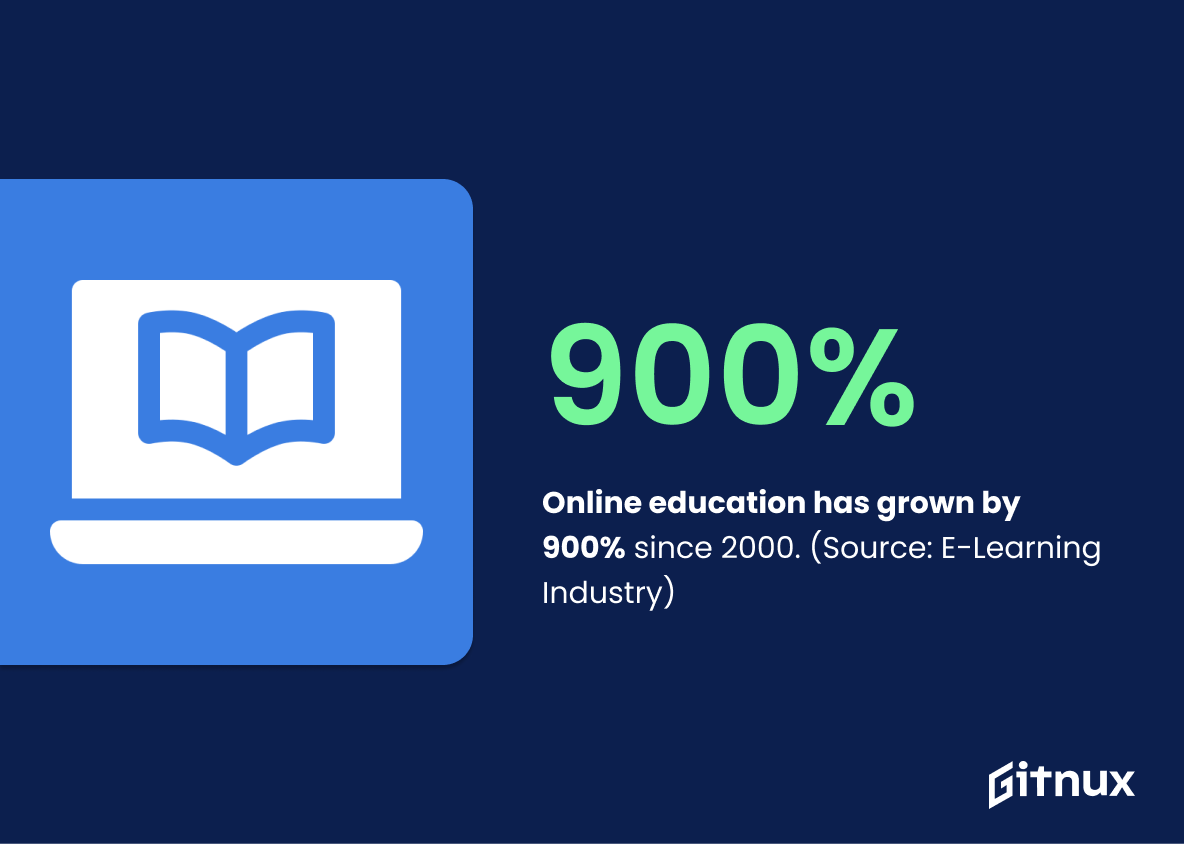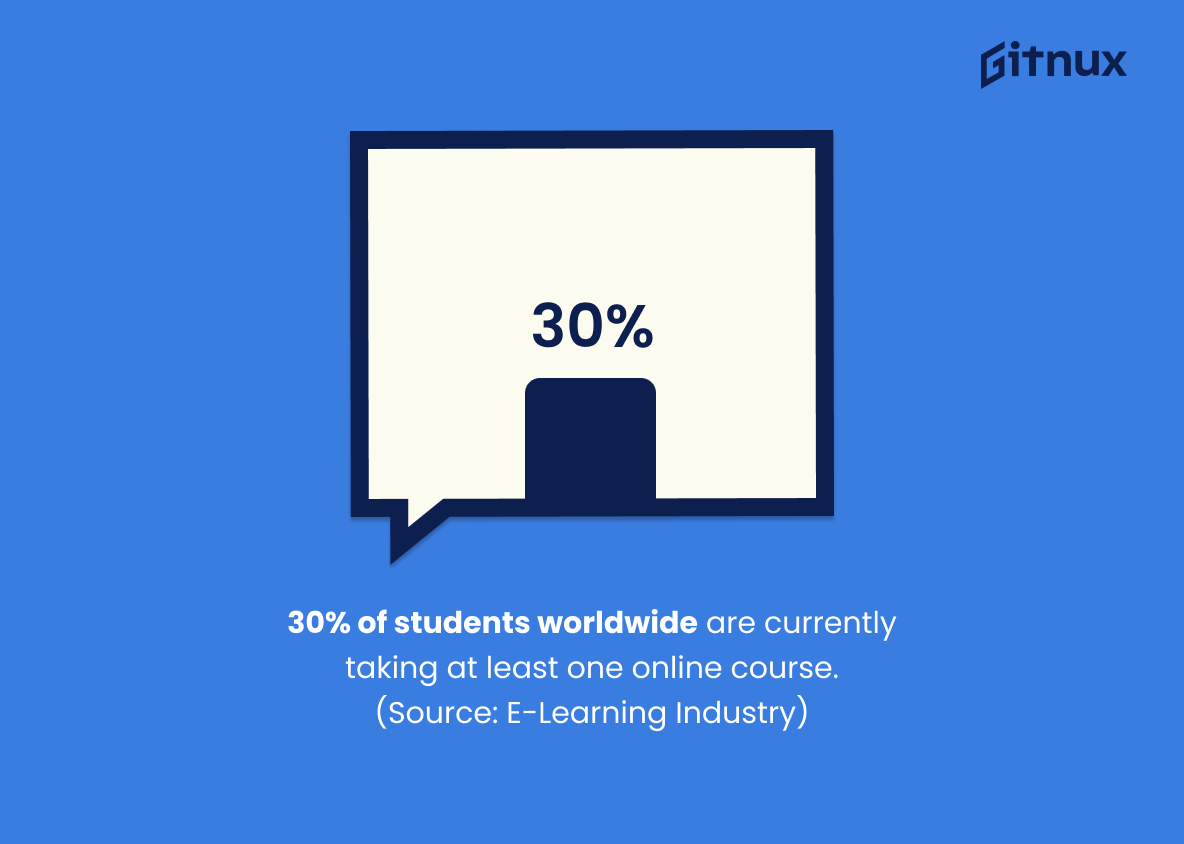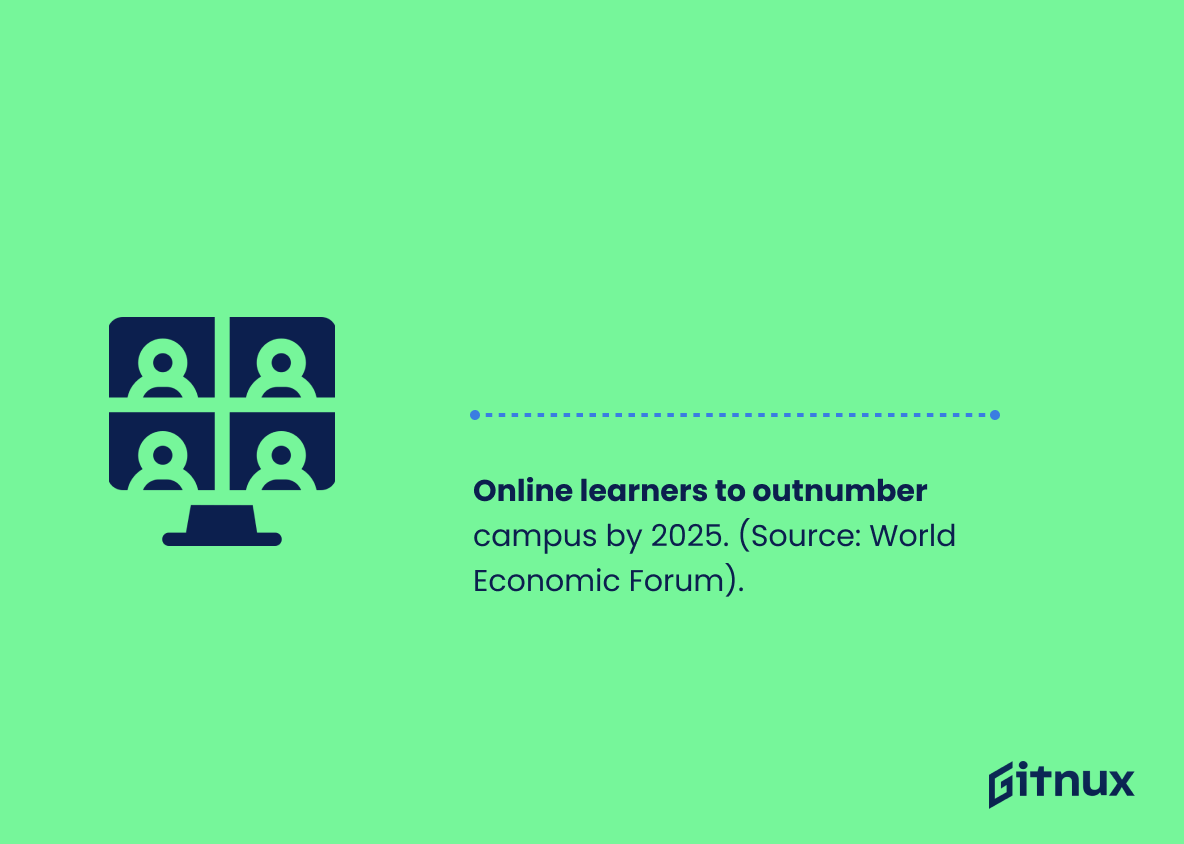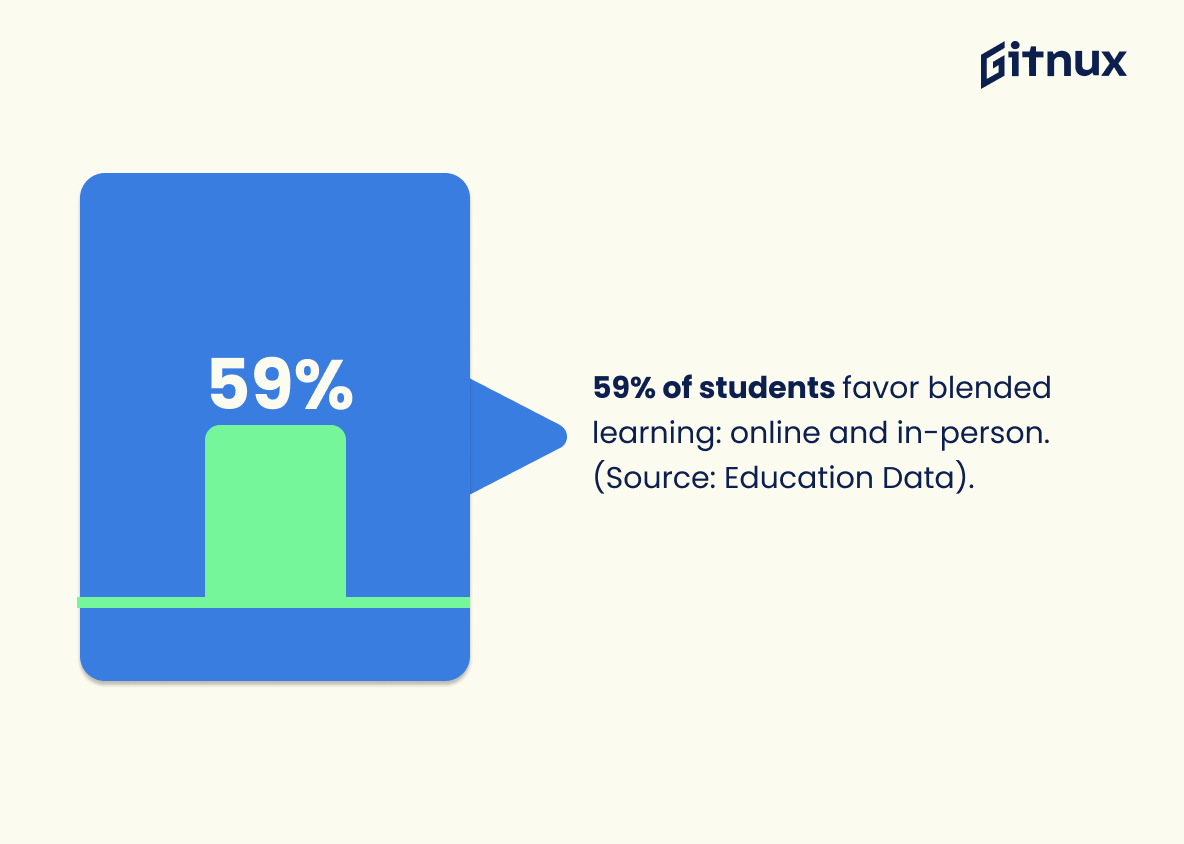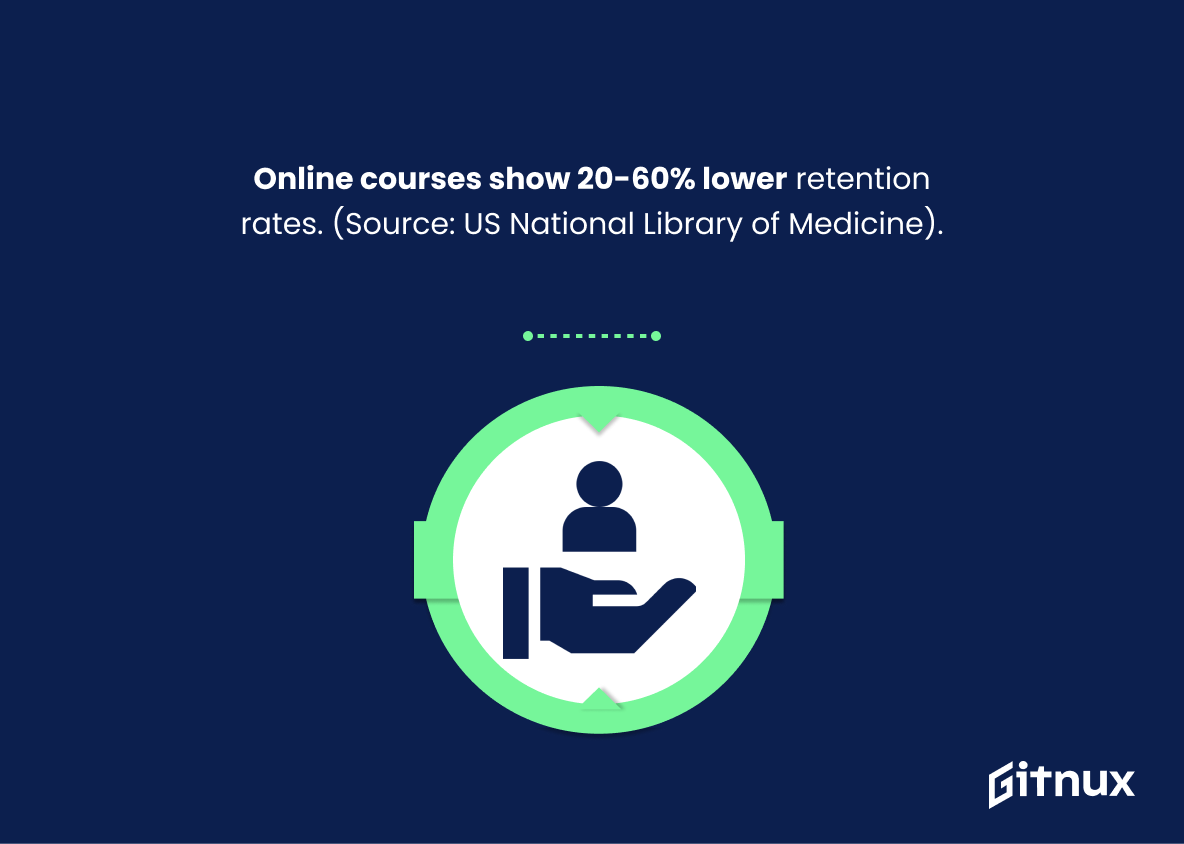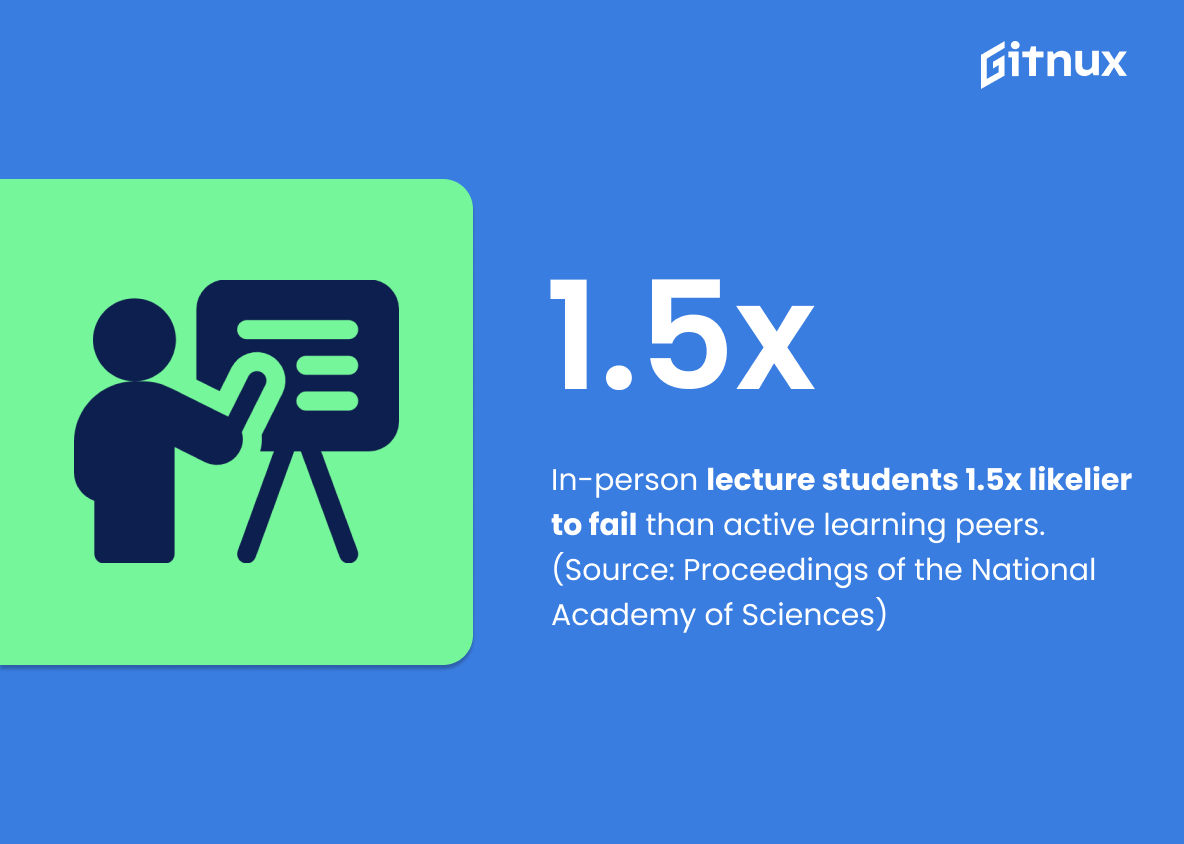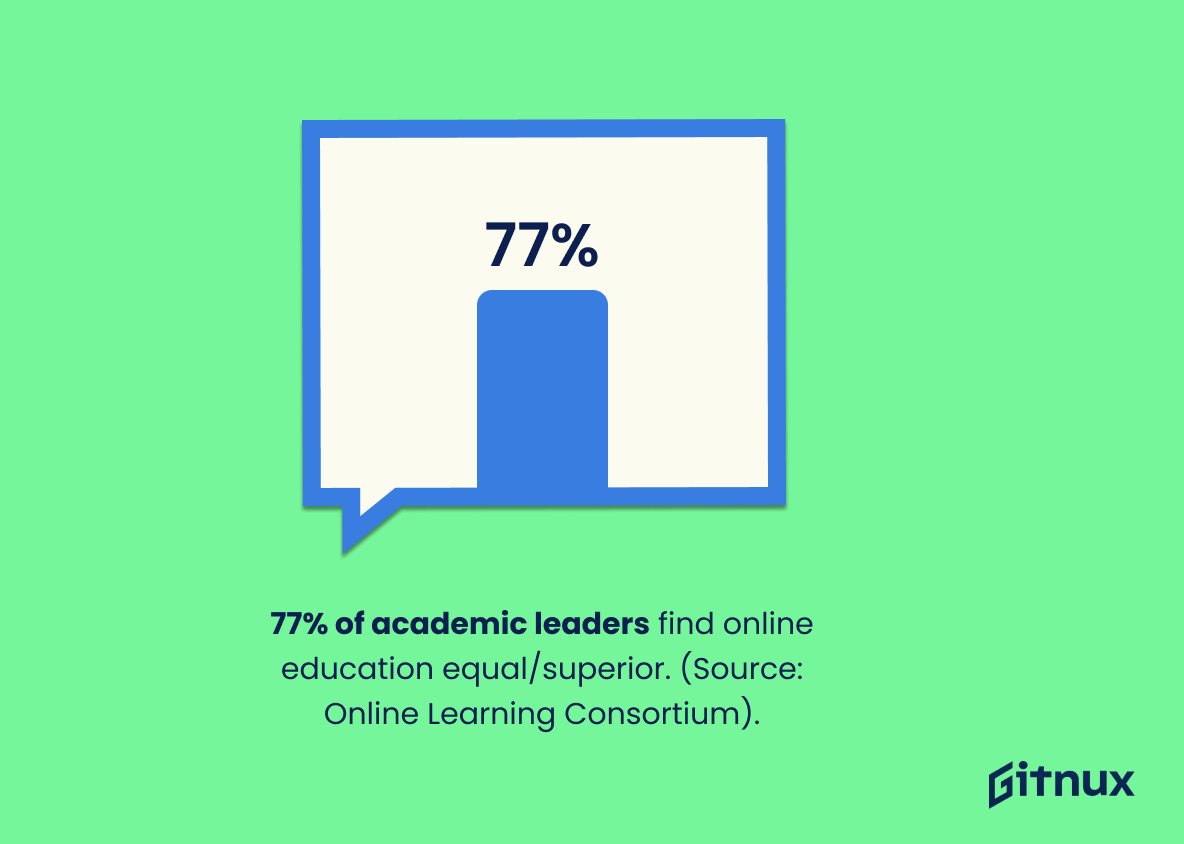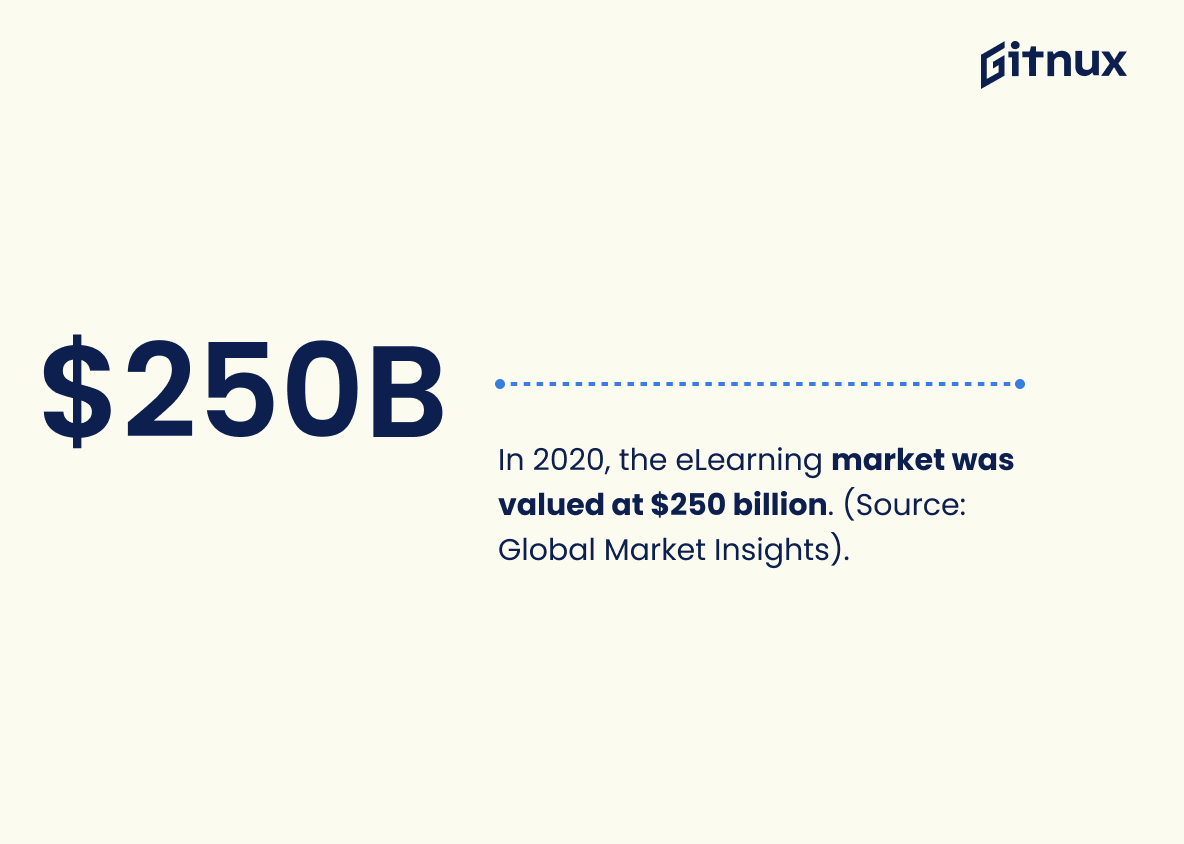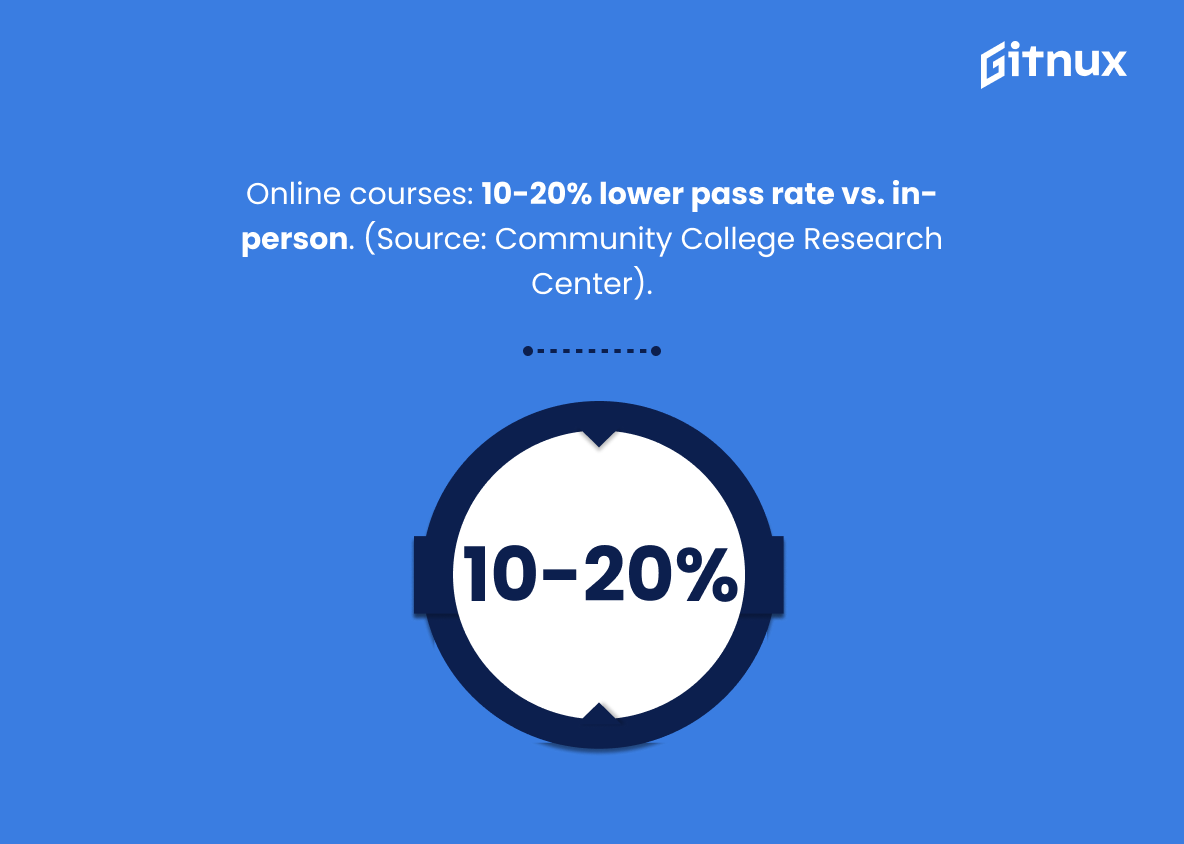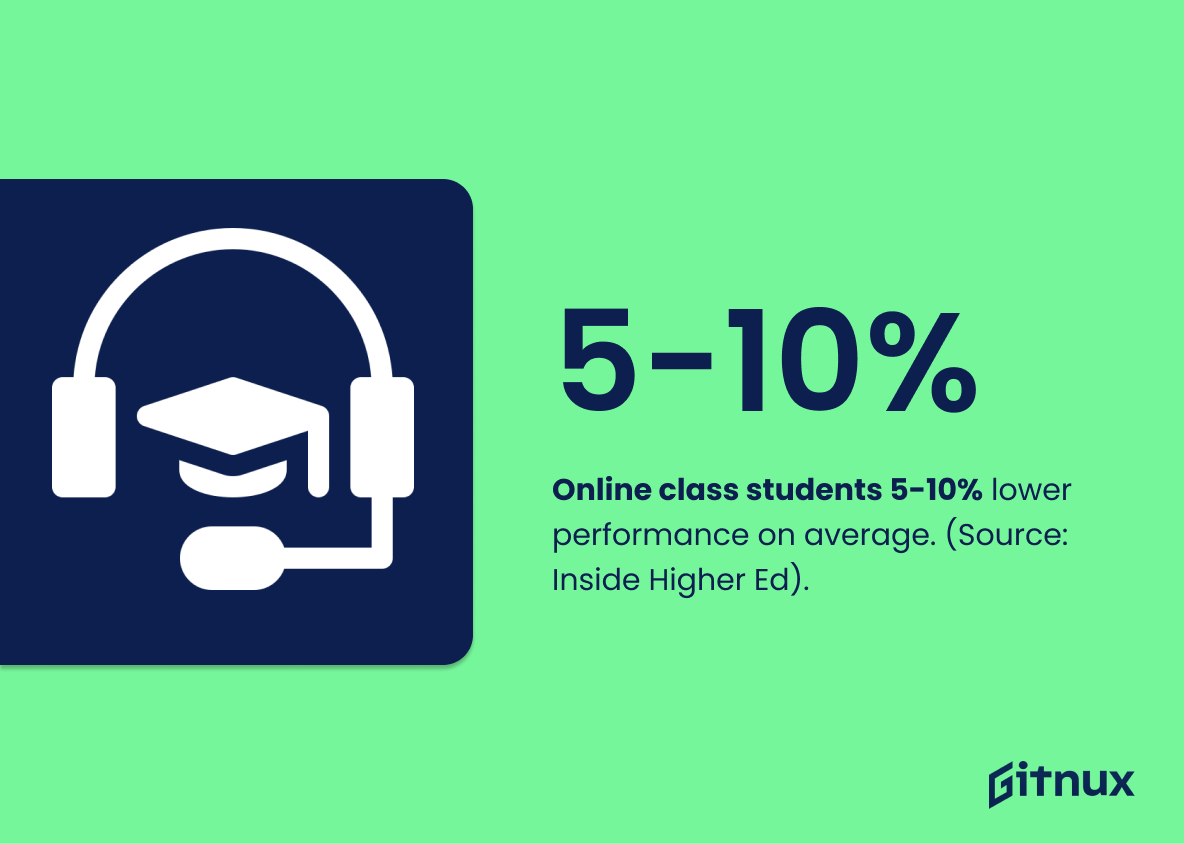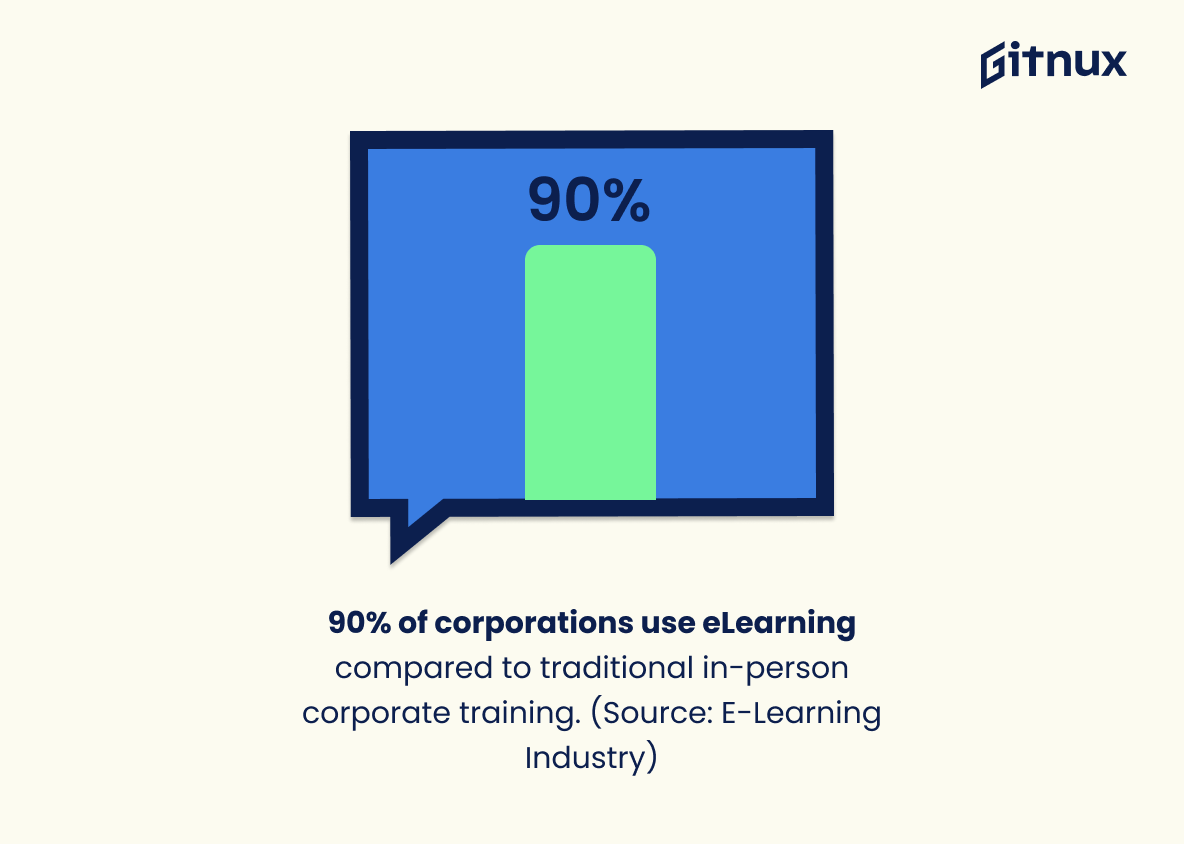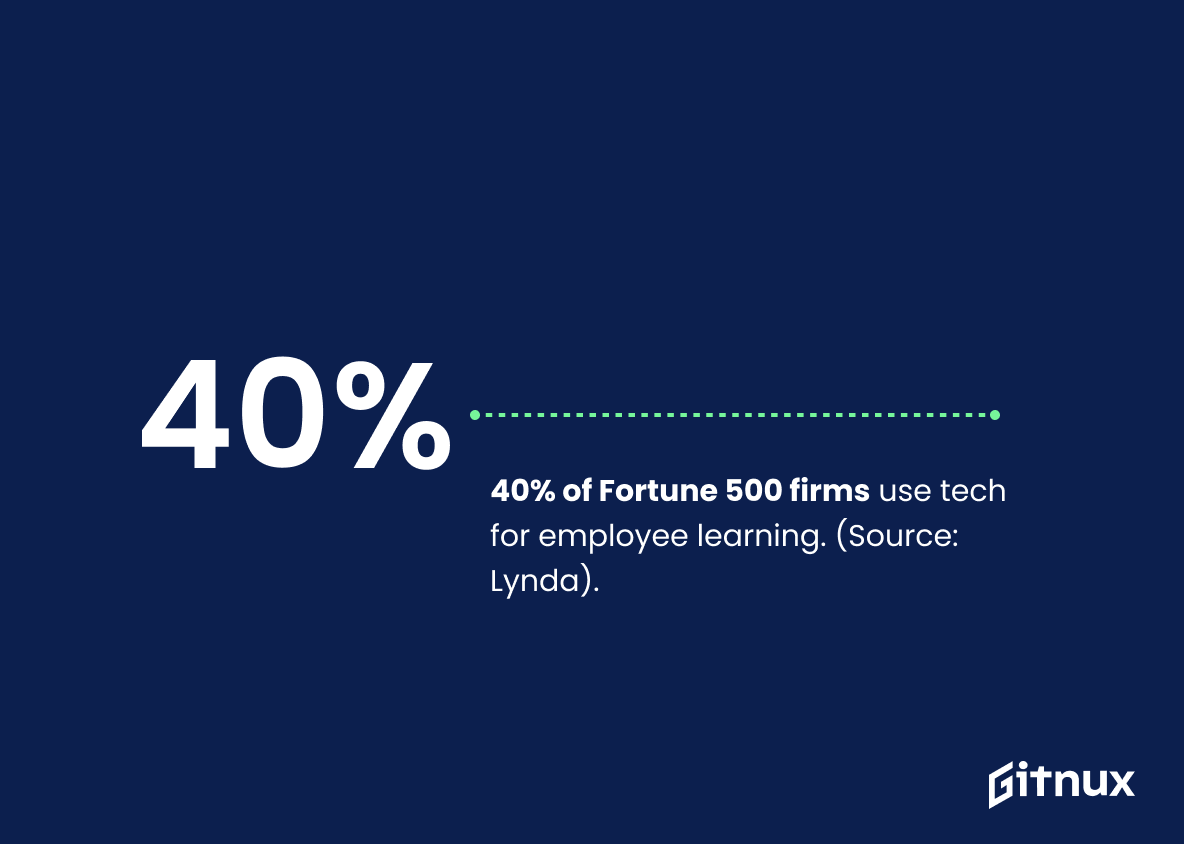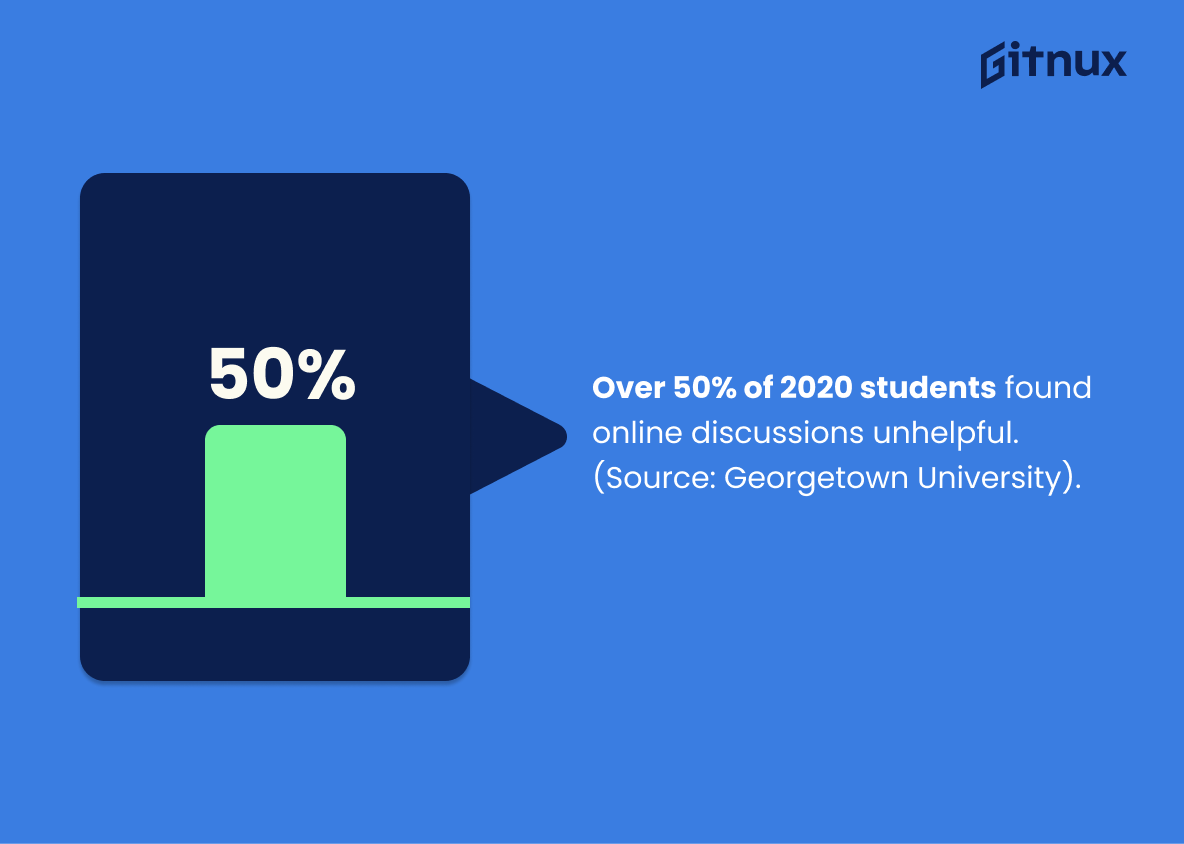In an ever-evolving landscape of education, the age-old debate has been rejuvenated: in-person learning versus online learning. As we delve deep into the 21st century, digitization is transforming various facets of our lives, including how we gain knowledge. Traditional brick-and-mortar classrooms are increasingly competing with the buzz of virtual learning environments. This increasing shift towards online education has sparked a renewed interest in understanding the effectiveness of both these platforms. In our post today, we will reflect on the intriguing statistics that highlight the pros and cons of in-person versus online learning, providing a comprehensive analysis that could potentially shape the future of educational pathways. Whether you are an educator, student, or curious reader, this in-depth exploration offers a valuable insight into an ongoing debate.
The Latest In-Person Vs Online Learning Statistics Unveiled
Online education has grown by 900% since 2000. (Source: E-Learning Industry)
Peeling the curtain back on the rapidly evolving world of education, the powerhouse transformation of the online learning trajectory must be highlighted. Since 2000, online education has experienced an explosive 900% growth as cited by E-Learning Industry. This staggering number not only illustrates the escalating attractiveness of online learning but also how it has emerged as a formidable contender to conventional in-person learning.
In the heated debate of in-person versus online learning, this figure offers a telling glimpse into the trend and traction online learning has gained over the past two decades. It serves as essential data that can challenge traditional notions about the typical classroom and school experience.
Taking this statistic into account, it leads us to reassess and arguably reshape the future of education. Is the classroom without borders and geographical constraints the new norm? This is a compelling piece in the puzzle and should be a significant consideration for educators and learners charting their course in the ever-changing academic landscape.
30% of students worldwide are currently taking at least one online course. (Source: E-Learning Industry)
In the dynamic arena of In-Person vs Online Learning Statistics, let’s ponder on a significant fact – currently, 30% of students worldwide are engaged in at least one online course as per E-Learning Industry. This statistic paints a vivid image of the educational landscape, pulsating with digital involvement. It provides a tangible evidence of the surge in global e-learning participation, reinforcing the escalating power of online education.
This impactful data point forms a sturdy bridge, linking the virtual and physical worlds of learning, thus highlighting the evolving educational trends and preferences. It serves as a reflection of not only the accessibility and versatility of online learning, but also the adaptability of students across the globe. As we delve deeper into the debate of ‘In-person Vs. Online Learning,’ this statistic subtly yet powerfully sets the stage for meaningful discussions about the two modes’ strengths, challenges, and the transformative journey of modern education.
Online learners are on track to outnumber traditional, on-campus learners by 2025. (Source: World Economic Forum)
Illuminating the landscape of future education, this statistic, sourced from the World Economic Forum, provides a striking projection: online learners are set to surpass traditional, on-campus learners by 2025. This profound shift, embodied in the numbers, indicates the transformative power of digital platforms in shaping academic pathways, a topic of paramount relevance to our discussion on In-Person versus Online Learning Statistics. Coupling this prediction with the potential advantages and drawbacks of both learning methods will significantly enrich our understanding of, and prepare us for, the evolving educational paradigms. In a sense, this statistic is not just nuance; it is the story of an oncoming revolution. The statistic points us towards an impending crossroad in education, eliciting contemplation about how we can best equip ourselves and future generations for this imminent switch.
59% of students prefer a blended learning environment of online and face-to-face engagement. (Source: Education Data)
Delving into the fascinating realm of In-Person Vs Online Learning Statistics, the intriguing figure of 59% of students leaning towards a blended learning approach, as reported by Education Data, takes center stage. It harmoniously intertwines the digital and physical dimensions of knowledge acquisition, integrating the adaptability of online learning with the personal touch of face-to-face engagement. This blend serves as the golden middle ground for students, delicately balancing technological advancements with traditional teaching methods.
By embracing this statistic, educators can step closer towards individualization in learning, attuning their methods to the multifaceted needs of today’s students. In a rapidly digitizing world, the crave for human connection persists, as exemplified by a majority of students preferring a symbiosis of online and in-person education. Herein, our blog constructs its discourse on an important digital-era crossroad – the intersection of virtual classrooms with brick and mortar education facilities.
Retention rates are 20-60% lower in online courses than in traditional in-person courses. (Source: US National Library of Medicine)
Navigating the virtual torrent of In-Person Vs Online Learning Statistics, the cited figure on retention rates presents a potent insight. It throws the spotlight on a considerable gulf existing between online courses and their traditional counterparts. Notably, a 20-60% lower retention rate in digital classrooms can steer an important conversation about the potential pitfalls of online education. This statistic stirs us to delve deeper into these learning models’ specifics, embracing their strengths and addressing their weaknesses for a better, more efficient learning experience. Bearing in mind that success in education is not just about sign-ups but how many students cross the finish line, this gap showcases a crucial aspect of online education that demands improvement.
Students in traditional, in-person lecture courses are 1.5 times more likely to fail than students in courses with active learning techniques. (Source: Proceedings of the National Academy of Sciences)
Illuminating the spotlight on this influential statistic, it forms a compelling cornerstone in our debate of traditional in-person versus online learning. Lifting the veil on traditional lecture-based approaches, it reveals a staggering 1.5 times higher likelihood of failure for students, when compared to their counterparts employing active learning techniques. Meeting statistics head-on, this finding is a seismic shift in the educational landscape, which echoes profoundly in our discourse. It lays bare an undeniable transformation in learning methodologies, challenging the conventional wisdom of traditional lectures being the best approach.
This striking data sets the stage for an intensified discussion about contemporary education systems. Undeniably, it unearths the urgency and significance of integrating interactive, engaging, and dynamic methods in education, be it virtual or physical. The statistic serves as a powerful beacon to guide teachers, educators, and institutions in reevaluating their teaching pedagogies, whether in an online or in-person setting. Had we overlooked this enlightening fact, it would leave our discourse on In-Person Vs Online Learning Statistics standing on shaky grounds.
Therefore, this statistic is not merely a fragment of data; it voices compelling narratives encompassing the essence of this contentious debate, adding greater depth and challenging our preconceived perspectives about traditional and online learning experiences.
77% of academic leaders rate online education as the same or superior to face-to-face learning. (Source: Online Learning Consortium)
Highlighting the statistic that posits 77% of academic leaders rate online education as the same or superior to face-to-face learning underscores a key shift in the realm of traditional teaching methodologies. Nestled within this numeric data hides a profound message, that the world of education is not immune to the digital revolution. In the grand debate of in-person versus online learning, it solidifies the credible status of online learning. This authoritative endorsement follows the trend of democratizing education, making it accessible, flexible, and compatible with contemporary life demands. So, this particular nugget of data throws a spotlight on how education stakeholders are welcoming this change, heralding an era where online learning doesn’t just sit at the kids’ table but commands respect and recognition at the high table.
In 2020, the eLearning market was valued at $250 billion. (Source: Global Market Insights)
Diving into the realm of statistics gives us a well of meaningful insights, one of which is illuminating the stark expansion of the eLearning market. Recorded at an impressive $250 billion valuation in 2020, this figure is far from a mere digit. It paints a vibrant landscape of education’s dynamic shift driven by technology. It’s as though we are witnessing an impending revolution, with traditional in-person learning progressively being embedded with, if not entirely replaced by, online learning. This surge in eLearning’s market value has not ascended in a vacuum — it signifies how learners and educators alike are increasingly leaning into virtual classrooms, fueled by convenience, cost-effectiveness and personalized learning experiences. Now, as we compare In-Person Vs Online Learning, this number—$250 billion—vividly charts online learning’s meteoric rise, prompting us to rethink old structures and embrace new modes of education.
A whopping 81% of college students agree that digital learning technology helps improve their grades. (Source: McGraw-Hill)
In the ongoing debate between in-person and online learning methods, this striking revelation- a convincing 81% of college students echo their belief that digital learning technology accelerates their academic performance (Source: McGraw-Hill) – paints an intriguing picture. It becomes a tangible testament, arguing that the digital paradigm is not merely a convenient alternative but could potentially be a substantial engine of academic improvement. This figure injects life into the discussion, suggesting that online learning equips students with tools that might very well drive them towards academic success when harnessed effectively.
Online courses show a 10-20% lower pass rate compared to face-to-face classes. (Source: Community College Research Center)
In the vibrant showdown of in-person versus online learning, this statistic serves as a significant scoreboard. Highlighting a 10-20% lower pass rate for online courses compared to face-to-face classes, it broadcasts a telling disparity in the success frequencies of the two learning styles. Armed with this knowledge, educators, students, and policymakers can better navigate their choices and strategies in the digital age. For some, this statistic might ignite a desire to propel online learning quality to match traditional classroom standards. For others, it could reinforce their belief in the effectiveness of in-person learning. Either way, this statistic threads a key narrative line in the rich tapestry of the comparison between in-person and online learning.
Students enrolled in online classes do 5-10% worse, on average, than students in traditional in-person classes. (Source: Inside Higher Ed)
Diving into the realm of In-Person Vs Online Learning Statistics, one intriguing number leaps out at us: Students taking online classes tend to perform 5-10% worse on average compared to their peers who partake in traditional in-person classes, as reported by Inside Higher Ed. This piece of data forms a vital pivot point in the swirling debate on the efficacy of online versus in-person learning. It not only highlights potential deficits in the online learning model, such as lack of immediate feedback or limited engagement — it also may underline the import of direct interaction amongst students and between students and their instructors that is inherent in face-to-face education. Illuminate it as a lantern in our quest to comprehend the complex landscape of modern education and the quest to balance virtual and physical instructional methodologies.
90% of corporations use eLearning compared to traditional in-person corporate training. (Source: E-Learning Industry)
Navigating the ebb and flow of the learning landscape, we come across a riveting piece of data revealing that a staggering 90% of corporations favor eLearning over the traditional face-to-face instructional approach. In the thrilling duel between in-person and online learning, this statistic gives a decisive edge to the latter and highlights the gravity of its role in the corporate world.
In the blogging sphere, where this face-off is widely debated, this statistic bolsters the case for online learning. It acts as hard evidence of a significant shift in corporate strategies – a pivot towards eLearning that decisively reshapes the exploration of education methods. It unearths the preference and trust that corporations, aka captains of the industry, place in eLearning, thereby undeniably adding credibility to its effectiveness.
Resonating with the trends of the digital era, this statistic also accents the importance of technological integration in education. It underlines that eLearning isn’t just an alternative, but often the chosen method of learning and development in the modern corporate environment. Therefore, while dissecting the pros and cons of In-person vs. Online learning, this statistic adds vital context and weight to the discussion. It’s a persuasive piece in the vast puzzle which, when pieced together, paints a pictorial representation of contemporary educational trends.
About 40% of Fortune 500 companies use technology for learning for their employees during formal learning hours. (Source: Lynda)
Diving into the depths of this statistic sways our perspective on the debate around In-Person Vs Online Learning. Highlighting that a substantial 40% of Fortune 500 companies—elite entities that drive the world economy—implement technology during formal learning hours speaks volumes. It infers a growing shift towards the integration of online learning platforms within professional environments, signaling the value placed on this modality by top corporations.
One cannot overlook that these successful giants choose to adapt their traditional learning systems, acknowledging the efficiency and flexibility of online learning. The balance may, hence, be tilting towards virtual platforms, propelling us to reconsider the benefits of In-person learning. Consequently, our views on education may be reshaped as we discover novel ways technology can enhance learning, reconfigurating the realms of capacity building and productivity in a favorable direction.
In 2020, more than 50% of students said online class discussions were not helpful to their learning. (Source: Georgetown University)
Shining a spotlight on the statistic from Georgetown University, one poised over the battlefield of in-person vs online learning, you’ll find more than half of students in 2020 raising red flags about the effectiveness of online class discussions. We see this as a significant rallying cry for the importance of face-to-face communication in education. It thrusts to the forefront the potential shortcomings in an increasingly digital learning environment, triggering further exploration and analysis of the harmony between knowledge assimilation and environment. Thus, envelops a key consideration while comparing and contrasting in-person and online learning methodology.
Conclusion
In the grand tug-of-war between in-person and online learning, it is evident that both formats have their unique strengths and realities. Statistics highlight that while online learning offers accessibility, flexibility, and convenience, in-person learning holds true to its traditional roots offering direct interaction and social discourse. The preferred learning method may largely depend on individual learning styles and lifestyle needs. However, the integration of technology in education is seemingly undeniable given its growing trends. Thus, finding a balanced blend of both online and physical learning resources might indeed pave the way for a more diverse, inclusive, and effective educational paradigm.
References
0. – https://www.elearningindustry.com
1. – https://www.www.ncbi.nlm.nih.gov
2. – https://www.www.lynda.com
3. – https://www.www.gminsights.com
4. – https://www.www.insidehighered.com
5. – https://www.www.pnas.org
6. – https://www.educationdata.org
7. – https://www.ccrc.tc.columbia.edu
8. – https://www.www.weforum.org
9. – https://www.www.georgetown.edu
10. – https://www.www.mheducation.com
11. – https://www.onlinelearningconsortium.org
